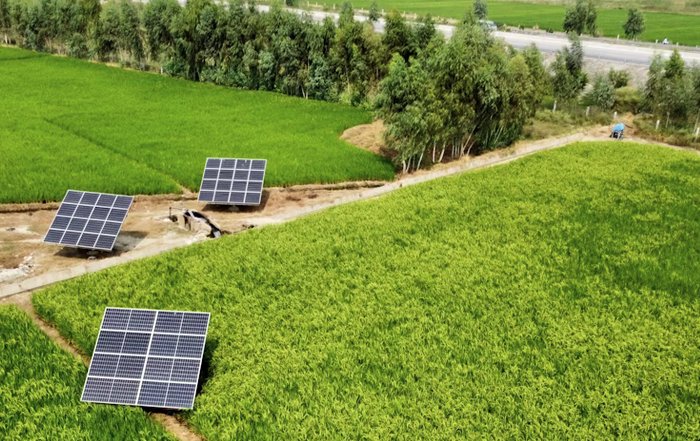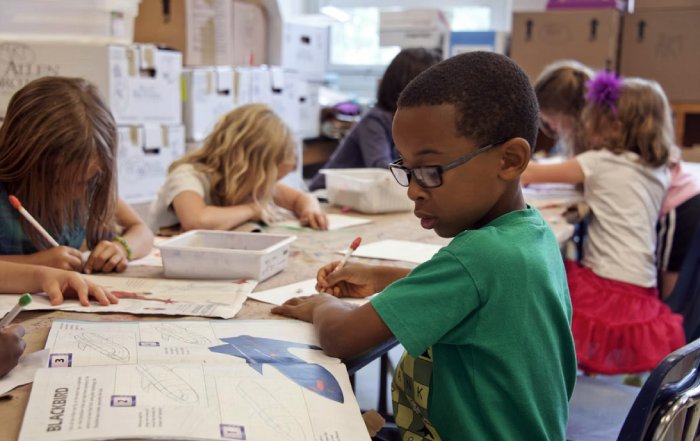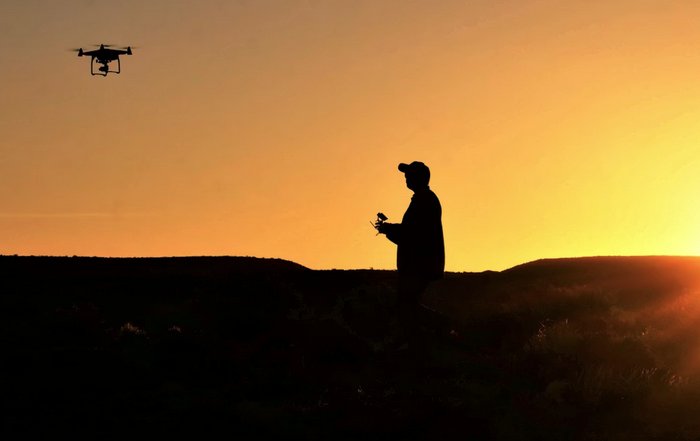Green Technology Solutions for a Sustainable Future
Opening the Door to a Greener World
As the world enters 2025 with intensifying climate pressures, accelerating technological change and shifting societal expectations, the conversation about green technology has moved from the margins of policy and business strategy to the very center of global decision-making. For readers of Worldsdoor-who navigate interconnected interests spanning health, travel, culture, lifestyle, business, technology, environment, innovation and ethics-the question is no longer whether green technology matters, but how it can be integrated into everyday choices, corporate decisions and public policy in ways that are both practical and transformative. Green technology solutions now shape how cities are designed, how companies compete, how individuals live and work, and how societies define prosperity and progress.
The concept of a sustainable future is not merely aspirational rhetoric; it is grounded in the increasingly urgent scientific consensus documented by organizations such as the Intergovernmental Panel on Climate Change (IPCC), whose assessments highlight the narrowing window for limiting global warming. Readers seeking to understand the scale of the challenge can explore the latest IPCC findings and recognize that technology, when deployed responsibly, is one of the most powerful levers for change. Against this backdrop, Worldsdoor positions itself as a guide, connecting global audiences from the United States and Europe to Asia, Africa and South America with the evolving landscape of green innovation, and curating insights that help bridge high-level strategy with personal and professional action.
Defining Green Technology in 2025
Green technology, often referred to as clean tech or climate tech, encompasses a broad set of products, services and systems designed to reduce environmental impact, enhance resource efficiency and support long-term ecological balance. This includes renewable energy, energy-efficient buildings, low-carbon transportation, sustainable agriculture, circular economy solutions, digital optimization tools and nature-based technologies. A defining feature in 2025 is the integration of digital technologies such as artificial intelligence, advanced data analytics and the Internet of Things into environmental applications, which is reshaping how sustainability is measured, managed and scaled.
Leading institutions such as the International Energy Agency (IEA) provide detailed analyses of how green technologies are transforming energy systems, offering scenarios that show the interplay between policy, investment and innovation. Businesses and policymakers in countries like Germany, the United Kingdom, the United States and South Korea increasingly rely on such data to chart pathways toward net-zero emissions. At the same time, the definition of green technology is expanding beyond emissions reduction to encompass resilience to climate impacts, social equity, health co-benefits and ethical considerations, all of which are central themes within the environment and society coverage of Worldsdoor.
The Global Climate and Policy Context
Green technology solutions cannot be fully understood without considering the evolving global policy landscape that shapes incentives, regulations and investment flows. The United Nations Framework Convention on Climate Change (UNFCCC) process, including the Paris Agreement and subsequent climate conferences, has created an international framework for emissions reduction, climate finance and technology transfer. Countries such as the European Union member states, Canada and Japan have strengthened their climate commitments, while emerging economies in Asia, Africa and South America are increasingly integrating green technologies into development strategies.
The World Bank has emphasized that sustainable infrastructure and green innovation are central to inclusive growth, particularly in fast-urbanizing regions such as Southeast Asia and Sub-Saharan Africa. In cities like Singapore, Copenhagen, Vancouver and Melbourne, policy frameworks encourage clean energy, low-carbon mobility and green building standards, demonstrating that regulatory clarity can accelerate private-sector innovation. For readers tracking these developments, the world and business sections of Worldsdoor provide a lens on how international agreements translate into local opportunities and challenges, from carbon pricing and green finance to climate adaptation in vulnerable regions.
Clean Energy: The Backbone of a Sustainable Future
Among all green technology domains, clean energy stands as the backbone of a sustainable future, because decarbonizing electricity unlocks emissions reductions across transport, buildings and industry. Over the past decade, the cost of solar and wind power has fallen dramatically, as documented by the International Renewable Energy Agency (IRENA), making renewables increasingly competitive with fossil fuels in markets from the United States and Spain to India and Brazil. In 2025, utility-scale solar farms, offshore wind projects and distributed rooftop systems are reshaping national energy mixes, while innovations in grid management, demand response and storage help address intermittency challenges.
Energy storage technologies, particularly lithium-ion and emerging solid-state batteries, play a crucial role in integrating variable renewables, and research institutions such as the U.S. Department of Energy's National Renewable Energy Laboratory (NREL) are advancing materials and system designs that improve efficiency and reduce costs. In parallel, green hydrogen produced from renewable electricity is gaining traction as a solution for decarbonizing heavy industry, long-distance transport and seasonal storage, with pilot projects in Germany, the Netherlands and Japan signaling early commercial pathways. For individuals and businesses seeking to understand how these developments affect investment decisions, operational strategies and lifestyle choices, Worldsdoor connects the macro-level energy transition with practical insights in its technology and sustainable coverage.
Buildings and Cities: Designing Low-Carbon Living
The built environment is responsible for a significant share of global energy use and emissions, making green building technologies and sustainable urban design critical components of any credible climate strategy. High-performance insulation, smart HVAC systems, energy-efficient lighting and advanced building management systems enable new and retrofitted structures to drastically reduce energy consumption while improving comfort and indoor air quality. Organizations such as the World Green Building Council promote standards and certifications that encourage developers and owners to prioritize energy efficiency, low-carbon materials and occupant well-being.
Cities from Stockholm and Oslo to Singapore and New York are experimenting with district heating, green roofs, urban forests and integrated public transit systems that reduce car dependency and improve resilience to heatwaves and flooding. The C40 Cities Climate Leadership Group documents how municipal leaders collaborate to share best practices and scale green infrastructure solutions, demonstrating that urban policy can be a powerful accelerator of green technology adoption. For readers considering how their own homes, workplaces and communities might evolve, Worldsdoor explores these trends through its lifestyle and innovation sections, highlighting examples from Europe, North America, Asia-Pacific and emerging urban centers in Africa and South America.
Mobility and Transportation: Electrification and Beyond
Transportation is undergoing a profound transformation as electric vehicles (EVs), shared mobility platforms and alternative fuels reshape how people and goods move within and between cities and nations. The rapid growth of EV adoption in markets such as China, the United States, Norway and the United Kingdom reflects a combination of declining battery costs, expanding charging infrastructure and supportive policies. The International Transport Forum provides in-depth analysis of how electrification, automation and digitalization are converging to reduce emissions, improve road safety and enhance accessibility.
Beyond passenger cars, green technology solutions are emerging across buses, trucks, rail, shipping and aviation. Electric buses are becoming common in cities from Shenzhen to London, while hydrogen fuel cell trucks and sustainable aviation fuels are being tested by companies in Europe, North America and Asia. The International Civil Aviation Organization (ICAO) and the International Maritime Organization (IMO) are working to align industry practices with climate goals, though significant challenges remain in scaling low-carbon solutions for long-distance freight and air travel. For the globally minded audience of Worldsdoor, the intersection of green mobility and travel raises important questions about how tourism, business travel and logistics can evolve in ways that support both economic vitality and environmental stewardship.
Industry, Circular Economy and Resource Efficiency
Industrial sectors such as steel, cement, chemicals and manufacturing present some of the most complex decarbonization challenges, yet they also offer substantial opportunities for green technology innovation. Energy-efficient equipment, electrification of industrial processes, carbon capture and storage, and the use of green hydrogen are all being explored and deployed to varying degrees. The World Economic Forum has highlighted the role of industrial clusters, public-private partnerships and digital optimization in accelerating low-carbon transitions, particularly in countries like Germany, Sweden, South Korea and Japan that are home to advanced manufacturing hubs.
At the same time, the rise of the circular economy is reshaping how businesses and consumers think about materials, waste and value creation. By designing products for longevity, repair, reuse and recycling, companies can reduce resource extraction, emissions and pollution while opening new revenue streams and business models. The Ellen MacArthur Foundation has been instrumental in articulating circular economy principles and showcasing examples from global brands and innovative start-ups. For readers of Worldsdoor, these developments intersect with themes explored in the business and culture sections, where shifting consumer expectations in markets from Canada and Australia to Brazil and South Africa are driving demand for more sustainable products and transparent supply chains.
Agriculture, Food Systems and Nature-Based Solutions
Green technology is not confined to energy and industry; it also plays a pivotal role in transforming agriculture and food systems, which are major contributors to greenhouse gas emissions, biodiversity loss and water stress. Precision agriculture, enabled by sensors, satellite imagery and data analytics, allows farmers in regions from the United States and France to Kenya and Thailand to optimize inputs such as water, fertilizers and pesticides, improving yields while reducing environmental impacts. The Food and Agriculture Organization (FAO) of the United Nations provides guidance on climate-smart agriculture practices that integrate technology with traditional knowledge to enhance resilience and sustainability.
Alternative proteins, vertical farming and regenerative agriculture are emerging as complementary approaches that address the environmental footprint of food production while meeting the nutritional needs of growing populations. Organizations such as the World Resources Institute (WRI) examine how dietary shifts, food waste reduction and sustainable land management can contribute to climate goals and biodiversity conservation. For readers exploring how their own choices around diet and consumption intersect with global sustainability, Worldsdoor connects these themes through its food and health coverage, illustrating how innovations in food technology align with wellness, culture and ethical considerations across diverse regions.
Digital Technologies as Enablers of Green Transformation
Digital technologies-including artificial intelligence, machine learning, big data analytics, digital twins and the Internet of Things-are increasingly recognized as critical enablers of green technology solutions. Smart grids use real-time data to balance electricity supply and demand, optimize renewable integration and enhance grid resilience. Industrial IoT systems monitor equipment performance, enabling predictive maintenance that reduces energy use, downtime and waste. In buildings and cities, digital platforms aggregate data from sensors, meters and user behavior to optimize heating, cooling, lighting and traffic flows.
The International Telecommunication Union (ITU) has explored how digital transformation can support environmental objectives while also cautioning about the energy and resource footprint of data centers, networks and devices. This duality underscores the need for responsible digital innovation that incorporates energy-efficient hardware, renewable-powered data infrastructure and circular design for electronics. For readers of Worldsdoor, the convergence of digital and green technologies is a recurring theme within technology and innovation, where case studies from Singapore, the Netherlands, the United States and beyond demonstrate how data-driven insights can unlock new levels of efficiency and transparency.
Finance, Policy and Corporate Strategy
The scale of investment required to achieve a sustainable future is immense, and the financial sector has become a critical arena for advancing green technology solutions. Green bonds, sustainability-linked loans and climate-focused investment funds are channeling capital into renewable energy, energy efficiency, sustainable transport and other low-carbon assets. The Task Force on Climate-related Financial Disclosures (TCFD) has encouraged companies and financial institutions to disclose climate risks and opportunities, shaping how investors assess long-term value and resilience. In parallel, regulatory bodies in the European Union, the United Kingdom, Canada and other jurisdictions are developing taxonomies and reporting standards to combat greenwashing and strengthen market confidence.
Corporate leaders in sectors ranging from technology and automotive to consumer goods and real estate are integrating sustainability into core strategy, recognizing that environmental performance, social impact and governance quality are increasingly linked to brand reputation, talent attraction and regulatory compliance. The OECD provides guidance on responsible business conduct and sustainable finance, underscoring the importance of transparency, stakeholder engagement and long-term thinking. For the business-focused audience of Worldsdoor, these developments are not abstract; they shape how companies in North America, Europe, Asia-Pacific and emerging markets adapt to shifting expectations and leverage green technology as a source of competitive advantage rather than a compliance burden.
Ethics, Equity and the Human Dimension of Green Technology
While the technical and financial aspects of green technology are essential, a sustainable future also depends on ethical considerations and social equity. Access to clean energy, safe water, healthy food and climate-resilient infrastructure remains uneven across and within countries, raising questions about who benefits from green innovation and who bears the costs of transition. Organizations such as Amnesty International have highlighted the human rights implications of extractive industries, including the mining of critical minerals for batteries and renewable technologies, and have called for stronger protections for communities and workers.
At the same time, the World Health Organization (WHO) has documented the health co-benefits of reducing air pollution through cleaner energy and transport, emphasizing that green technology solutions can simultaneously address environmental and public health challenges. For the editorial team at Worldsdoor, these intersections between technology, ethics and well-being are central to how stories are curated and presented, and are reflected in dedicated coverage of ethics, health and education, where readers can explore how policy, culture and individual choices shape the fairness and inclusivity of the green transition across regions from Europe and North America to Asia, Africa and Latin America.
Education, Culture and Behavioral Change
Green technology alone cannot deliver a sustainable future without accompanying shifts in knowledge, values and behavior. Education systems, from primary schools to universities and professional training programs, are increasingly integrating sustainability and climate literacy into curricula, preparing the next generation of engineers, entrepreneurs, policymakers and citizens to navigate complex environmental challenges. UNESCO and other international bodies emphasize the importance of education for sustainable development, highlighting how interdisciplinary approaches can connect science, ethics, culture and local context.
Cultural narratives, media and storytelling also play a powerful role in shaping perceptions of what is desirable, possible and normal. Films, literature, digital media and public art from countries such as France, Italy, South Korea and Brazil are increasingly exploring themes of climate, resilience and ecological connection, influencing how societies imagine their relationship with nature and technology. Within this cultural landscape, Worldsdoor serves as a platform that brings together perspectives on culture, society and lifestyle, helping readers see how choices about consumption, mobility, work and leisure are intertwined with broader environmental outcomes, and how individuals across continents can contribute to collective change.
A Personal Future with Green Technology
For the diverse global audience of Worldsdoor, spanning interests from business strategy and technological innovation to travel, food and daily lifestyle, green technology solutions are not distant abstractions but increasingly tangible elements of personal and professional life. Whether a reader is considering installing rooftop solar in California or Queensland, choosing an electric vehicle in Norway or Japan, supporting regenerative agriculture in France or South Africa, or advocating for cleaner air and public transit in cities from Bangkok to São Paulo, the decisions made today are part of a wider mosaic shaping the world's environmental trajectory.
As 2025 unfolds, the challenge and opportunity lie in aligning innovation with integrity, ambition with practicality and global frameworks with local realities. Green technology, guided by clear evidence, robust ethics and inclusive governance, offers a pathway toward a future in which economic vitality, social well-being and ecological stability reinforce rather than undermine one another. Through its ongoing coverage across business, environment, sustainable and the wider ecosystem of sections available on Worldsdoor, the platform aims to equip readers with the insight, context and confidence to engage with this transition, not as passive observers, but as informed participants helping to open the door to a greener, more resilient and more equitable world.










